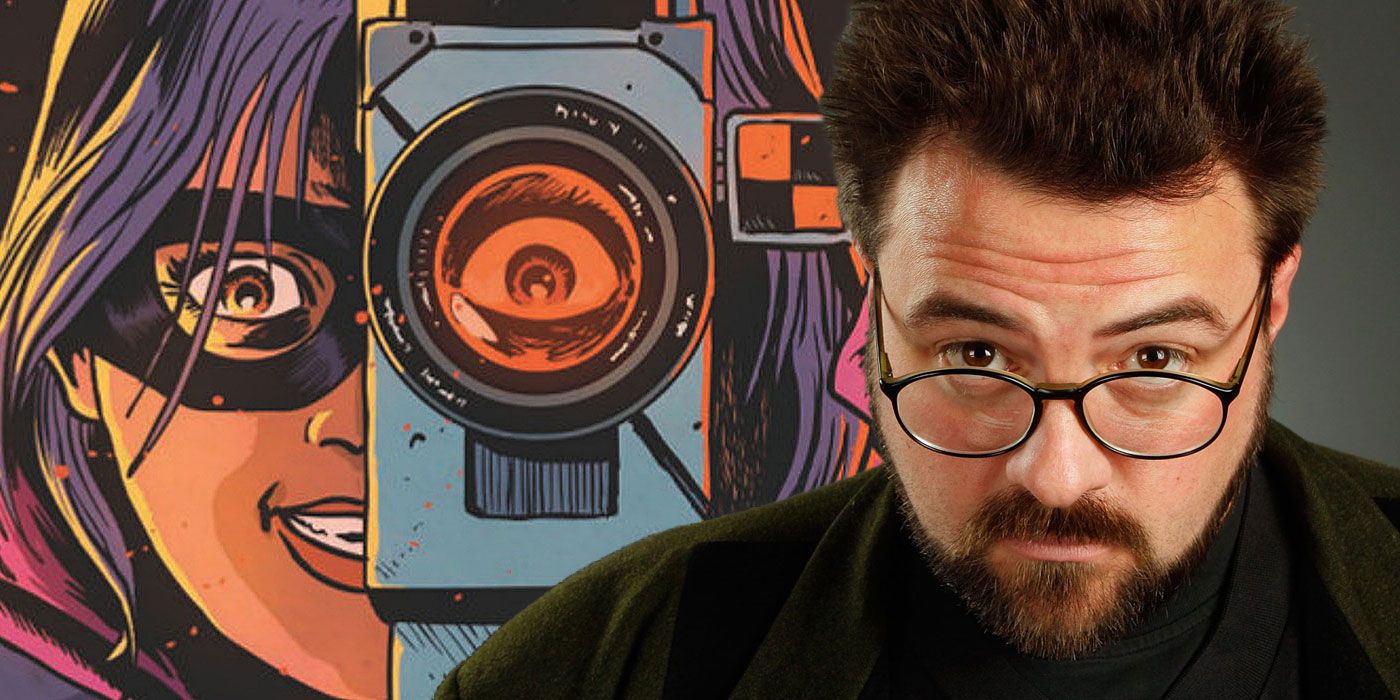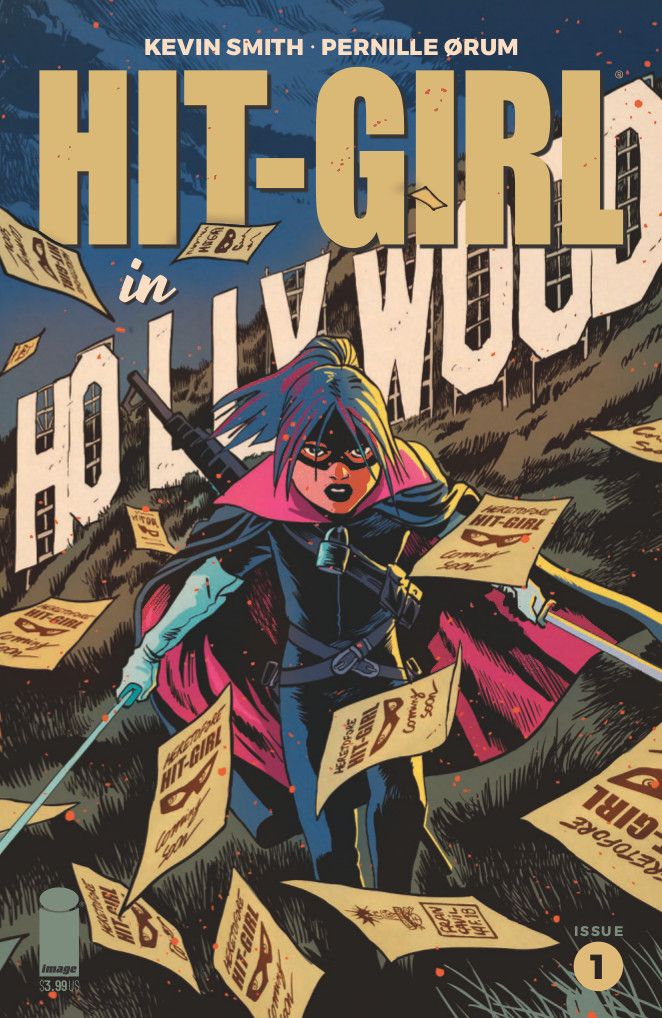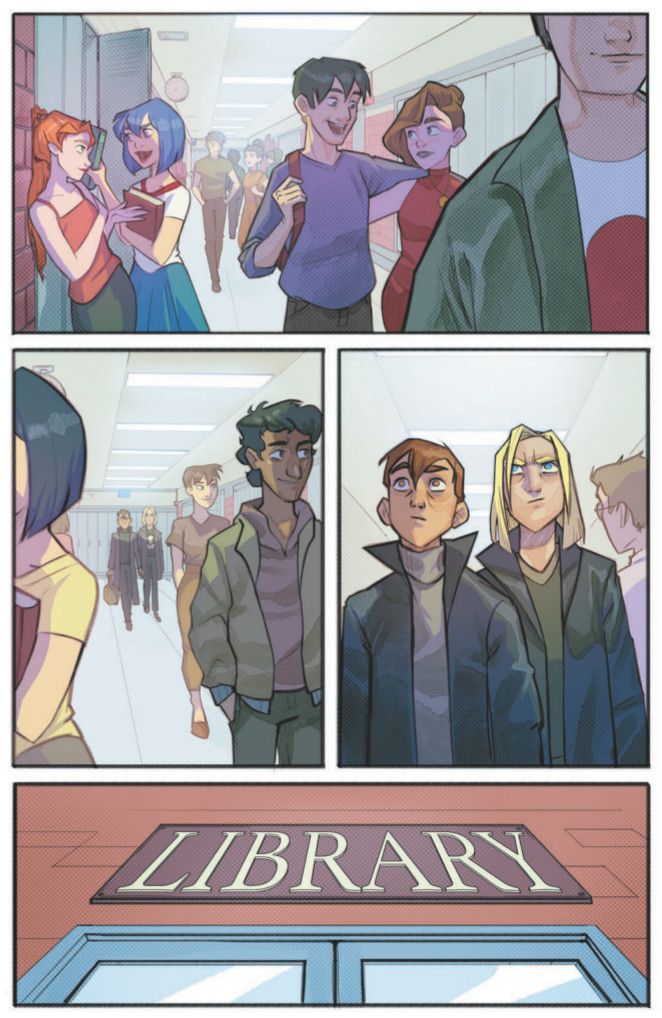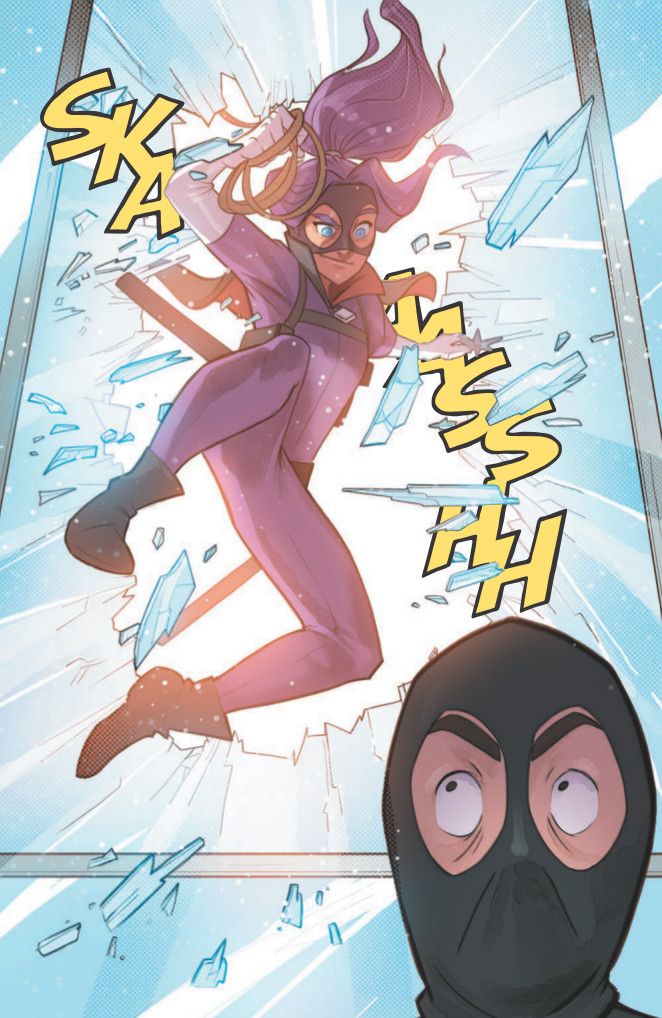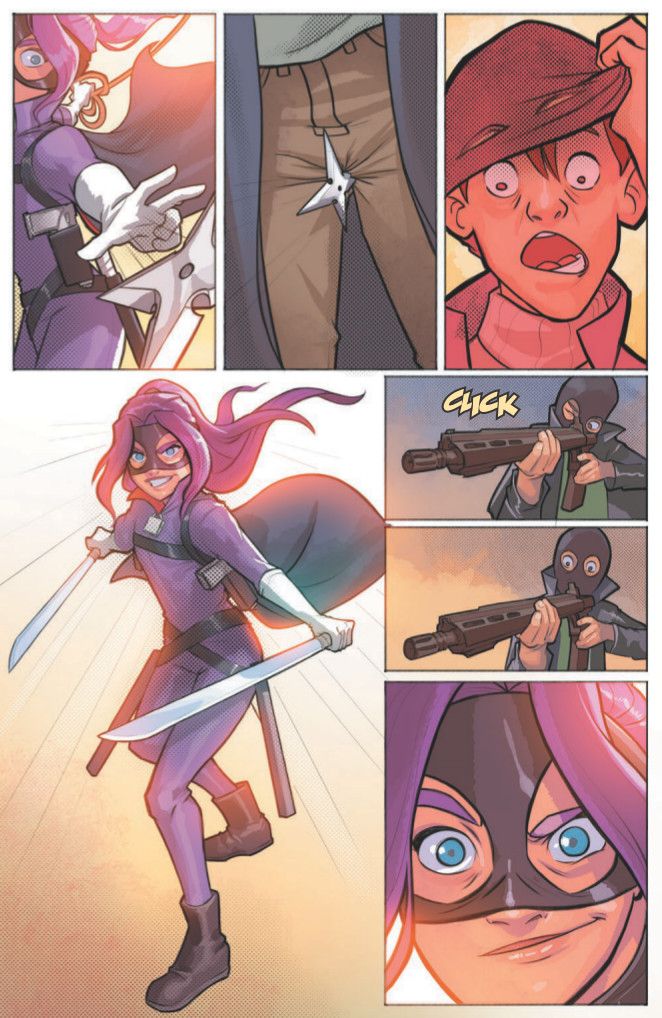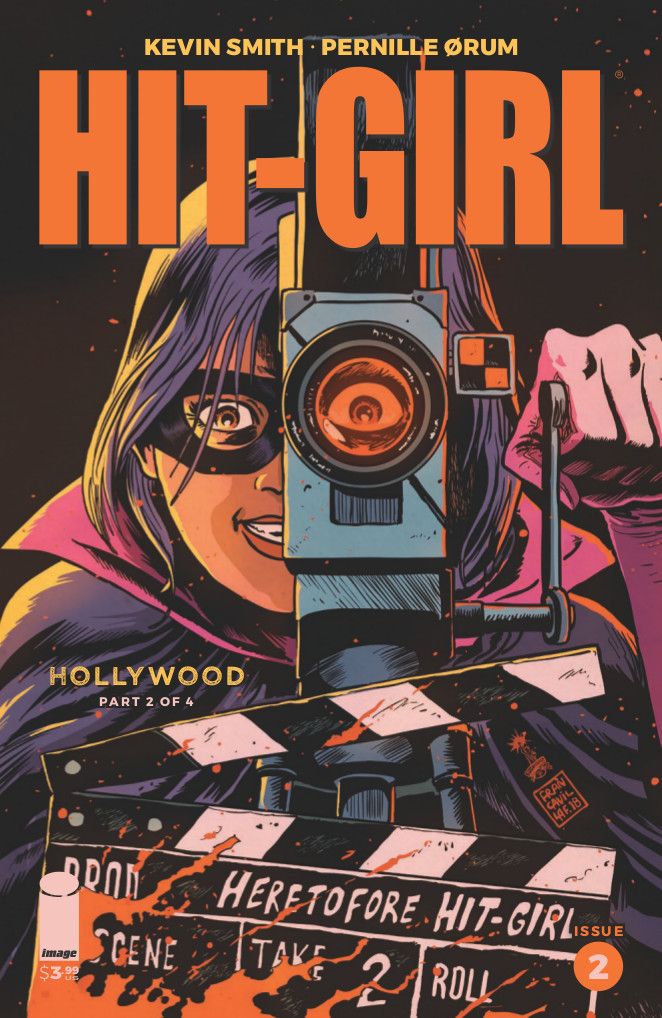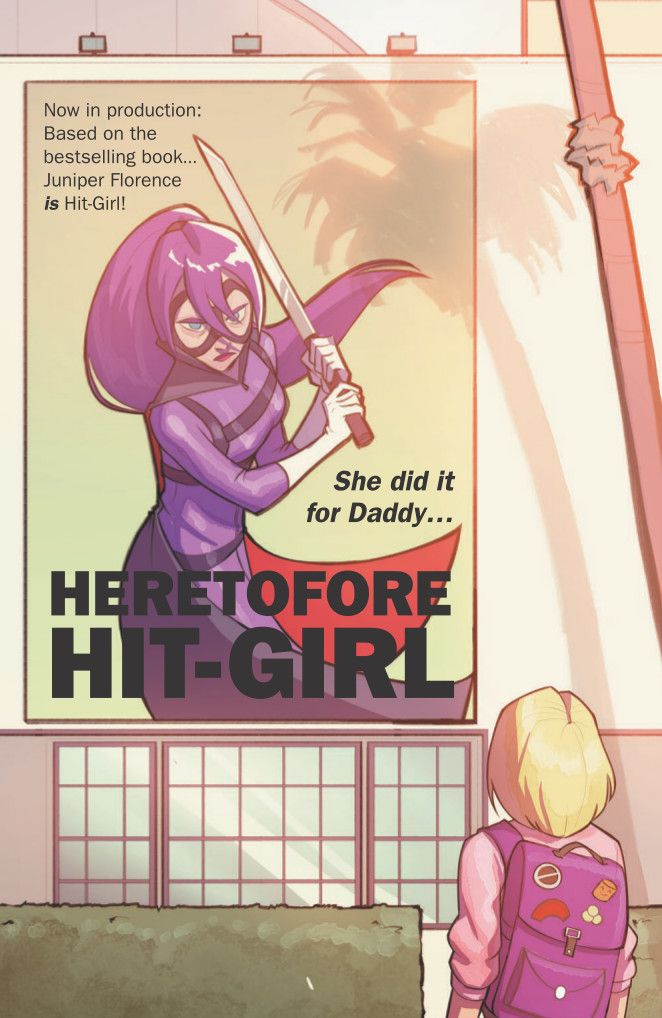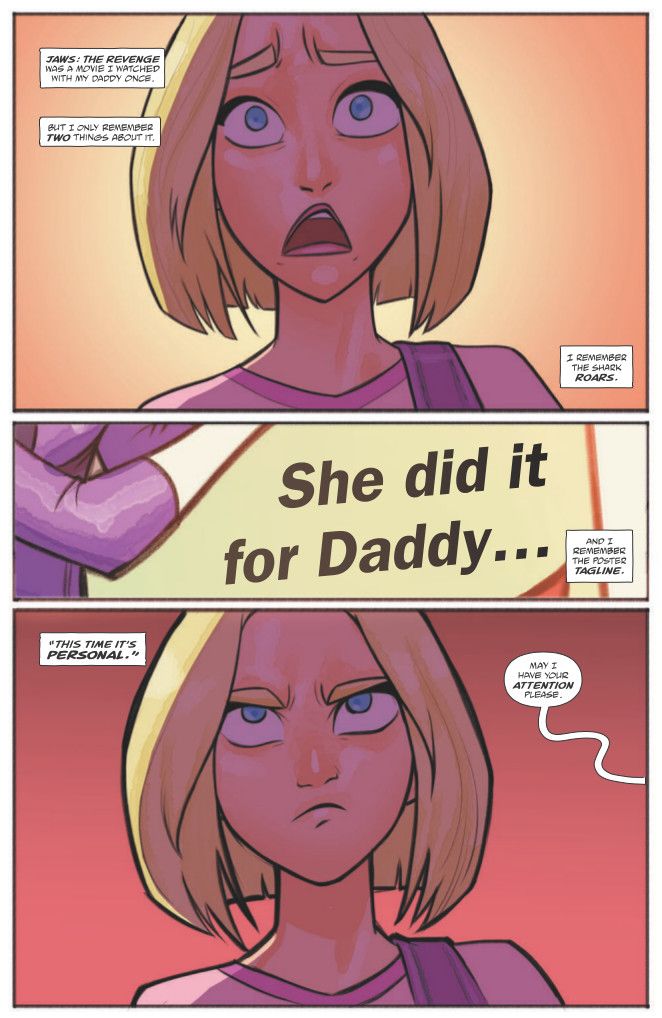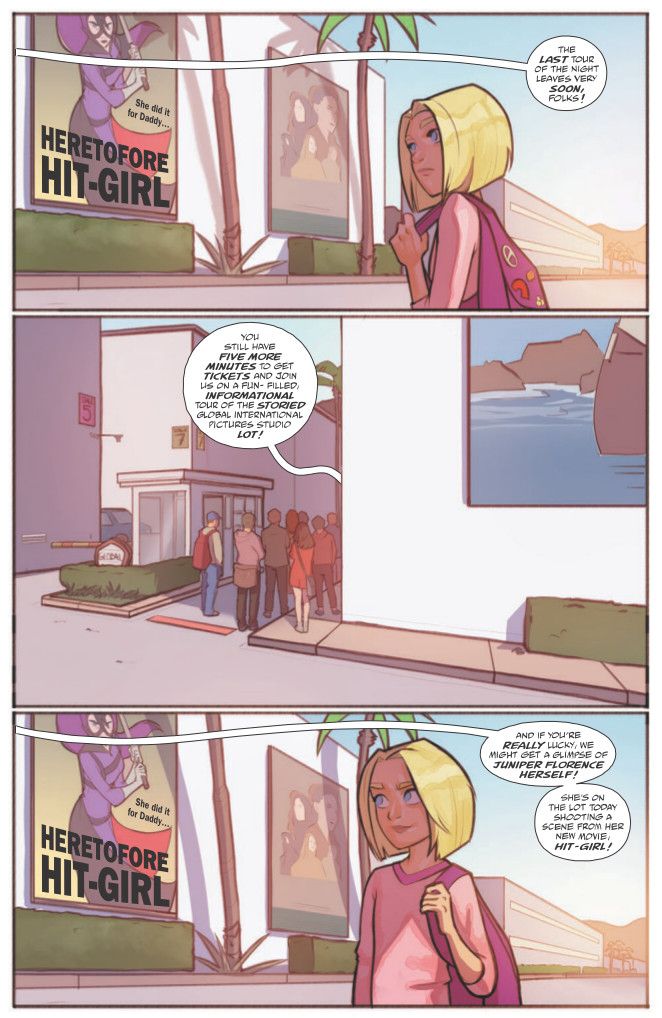Kevin Smith has never been a stranger to comics, but this month he made his return to the four-color medium with some unexpected twists.
Thanks to the combined efforts of Mark Millar and John Romita's Kick-Ass team and Image Comics, Smith teamed with artist Pernille Ørum this month to launch the latest chapter in the ongoing adventures of Hit-Girl. The pre-teen assassin stepped into volume 2 of her latest ongoing series with a new "Golden Rage of Hollywood" arc which sees Mindy McCready head to Los Angeles to stop a movie of her life from being made. While the story may sound familiar to Smith fans, there was plenty of new wrinkles to the trope in issue #1 – a "silent" affair that told the story of Hit-Girl foiling a school shooting sans dialogue of any kind.
CBR spoke with Smith from the preproduction offices of his next film, Jay and Silent Bob Reboot, and the director went in-depth about the Hollywood parallels and John Byrne comics that inspired his quiet opening story, his personal feelings on how to process the horror of mass shootings in his work, the way his films and comics have been received over the years and why by the end of Mindy's four-issue journey, her view of Hollywood may not be so cynical after all.
CBR: How was it that Mark came to you and got you on board to get into writing comics again?
Kevin Smith: He asked. It's that simple. He hit me with an e-mail out of the blue. I've known Mark for years and am a big fan going back to when he took over Swamp Thing back in the day. He referenced Alan Moore's run, and that instantly made me love him to death. Plus, he's just a really great writer. So I would seek him out at cons and tell him, "Man, I love what you do. I've got pages from Swamp Thing framed in my house and shit."
RELATED REVIEW: Hit-Girl Season Two #1 is Silent But Deadly
I've known him for years, and I've watched him slowly become and industry and really a titan of comic books. He went from that dude who wrote a Swamp Thing I love to being Mark Fuckin' Millar. Netflix invested in the Mark Millar business. And for me, that was a moment where you say, "Hey! One of the good guys rose to the top!" And I loved it when they did Kick-Ass as a flick and introduced Hit-Girl, and I loved Kingsman. I love that his shit has taken off. Some people in this business where you go, "That asshole made it?" but never Mark. He's a really nice guy, and I'm happy to see him succeed.
So he hit me up before my heart attack and told me how he was going to revive the Kick-Ass stuff but give Hit-Girl her own run on a book. And he said, "Do you have any interest in doing four issues?" and I said I'd love to if he thought I was the guy. He was looking to pick artists that would make for international mashups, and I said that there was an artist I love who did a Yoga Hosers piece for me called Pernille. She gave it to me on an episode of the Hollywood Babble-On podcast that we do. I fell in love with her artwork in a big bad way. The DC Super Hero Girls line – which I absolutely love – she was a designer on them. She came in not just as me going "Can you hire my friend?" but she's a legit talent in this space.
And I felt like this story – since we're doing Hit-Girl in Hollywood – needed Pernille who draws in a kind of Disney-esque style. I thought that would lend itself to our story. I don't know if they would have gotten away with her art style when Hit-Girl went to Brazil or Chile, but in a story where we're taking on a fictionalized version of her story in Hollywood, this style felt like the perfect blend of it all. So once Mark hired me, I asked if he could hire her, and then we were off to the races.
And then I had a heart attack. But when I was off mending, I went to work on the scripts. I literally couldn't do anything else. I wrote this in the first week after the heart attack when I was sitting at home unable to do much else. I could physically get around, but I wasn't allowed to work or get up on stage. So I just sat in my office and wrote Hit-Girl, and boy, it came so thick and fast.
What inspired the silent storytelling of that first issue?
The first issue was easy because I didn't have to write any dialogue, and I stole that from John Byrne. When I was a kid, he did a run called "The Many Deaths of Batman." The first issue of that was wordless except for at one point Jim Gordon is in a morgue and says, "Get out." Otherwise not a single line of dialogue. And I was always impressed by that. That's knowing your medium. It's a visual medium, and to do an entire story without word balloons? That takes talent. And naturally, it was John Byrne, so it all made sense.
RELATED: Inside Hit-Girl’s Global War On Crime
So when I started in on Hit-Girl, I figured if it was four issues set in Hollywood then each issue could have some dopey nod to Hollywood history. The first one would be "The Silent Era," and I thought it would both be a cool story and a great showcase for Pernille's artwork. She's front and center without word balloons getting in the way. And as another plus, I have done comics in a minute, and if you pay attention to this kind of thing, I'm known for using way too many words. Joe Quesada said to me, "Kevin, you have to leave me a little space to draw pictures" back when we were doing Daredevil. I would just write so many word balloons. Coming back to comics for the first time in a minute and knowing that even the Batman comic I did with Ralph Garman had dialogue all over the place. So let's see if I can do what John Byrne did and tell a story without any dialogue.
And it worked out! The first issue is "The Silent Era" and does its thing, and then the second issue is "The Talkies," and that's when we get into the dialogue of it all. She's cursing her fool head off. But if you're a person who says, "I pay for my comic books by the word, motherfucker" then you're going to feel really ripped off by Hit-Girl #1. But #2, 3 and 4 of the "Golden Rage of Hollywood" arc have plenty of dialogue.
NEXT PAGE: Kevin Smith, Hit-Girl and the Sensitive Subject of School Shootings
How did you marry that silent idea with the concept of a school shooting? Obviously, you're the parent of a teen, so this must be running through your head all the time.
I read the news like anybody else. And if [something like this] would have happened once, it would have been horrifying. But there was a period where – and thank God it's been a minute since something so high profile has happened that the whole country stops and says "How could this happen?" – but you remember for a minute this was happening obscenely frequently. And as someone who reads the news and who has a kid in school who would come home and tell me about the drills they do? I mean, when I was a kid we'd have fire drills and go stand out in the parking lot. Now they have these shelter in place drills as part of education where you have to learn where to hide if someone comes in and starts firing a gun everywhere.
You're horrified by these things, of course, but as you tell a comic book story, it's all wish fulfillment. It's all about "Someone is going to be there at the right moment to save these people in the nick of time." The heroes are supposed to rescue people and right wrongs and deliver justice. When you've got a character like Hit-Girl, you can take that notion and twist it. When Batman punches somebody, it maybe breaks their ribs or just incapacitates them. Mindy will just cut their head off. It's the beauty of that character. Thankfully, this has been established by someone else. I'm not going out there for the first time and thinking, "Will anyone believe that a preteen kills people?" It's a proven concept at this point in movies and in comics.
RELATED: Kevin Smith is Confident Tom Cruise as Wolverine Would Make $1 Billion
But for me when you read a comic book story, it's wish fulfillment. You get to imagine that something could be done about this – because clearly legislation isn't doing anything about it. In that world and in that space, you can imagine what would happen. Since she is a youngster herself, in my imagination that this would be Mindy's beat. It's something she would be interested in stopping. "Hey, I know school kids." We've seen her go to school, even though she wasn't a big fan of it. And this is a kid whose childhood was ripped away from her. Her father trained her to be a killer from a young age. She was just a child. There's no normalcy there. There's a bit of a Bruce Wayne there – the idea of "I'm so far divorced from what normal people have experienced." I figured in the back of my mind as character motivation, this is a kid who will always be struggling and reaching back to a simpler world. She enjoys being bloody and taking out bad guys, but at the same time, anybody robbed of a childhood pines for it on some level.
More so than most other comic book superheroes I could write, Hit-Girl intervening in a school shooting – which, let's be honest is generally always boys or young men – made a lot of sense to me. Naturally, there's the question of whether anyone would find this distasteful, because I don't want to offend anybody. But then I thought that comic books have a long history of depicting horrible crimes but through the filter of "The Penguin did it this time!" So I hope that this works. I really hope people don't think I'm incredibly irresponsible. But I'm just reflecting the news. I didn't make this up. I mean, I made this particular incident up, but people go into schools with guns. I wish we lived in a world where there was a superhero who could take care of that.
And of course, you're the guy who made Chasing Amy and Dogma, so I'm guessing you're a little used to people being upset at what you do at this point.
That's the thing, though. Even with Chasing Amy and Dogma, that was never the intention. I guess I'm not a true artist in that I never go around saying, "I don't give a shit what anybody thinks...this is my art!" I'm mortified by the thought that someone can be offended by my work. I felt terrible when people saw Chasing Amy and said, "You think this is what our community looks like?" And with Dogma when the Catholics got mad? That was mortifying to me. It wasn't me going, "Yeah, look at this chaos!" I don't thrive on chaos.
Doing it, I don't sit there saying, "Boy, I hope this turns the screws on people." But at the end of the day, if it feels like the story wants to lean in that direction, you can go for it. With Hit-Girl, it wasn't to say "Look, isn't this cool?" It was to say, "Wouldn't it be great if somebody could come in and stop people like this?" Even if it's as violent as the events themselves, it's a fantasy.
NEXT PAGE: How Hit-Girl Goes to Hollywood Is Influenced By Jay and Silent Bob Strike Back
Longterm, you're playing with movie history in a meta sense, but you're also critiquing Los Angeles and the business as it stands today. What's your own experience with the town? Did you move out to the West Coast around the time of Mallrats?
No, I really didn't move out to Los Angeles until 2002. So from 1994 when I started with Clerks – which was filmed in '93, but everyone saw in in '94 – I stayed in Jersey. I'd move around to do the work. We shot Dogma in Pittsburgh, and Mallrats was done in Minnesota. But they all took place in Jersey, so I tried to stay as close to Jersey as possible. That was the joy of the job. You don't have to stay in Hollywood to be a director. You can tell a story wherever you live if you want to. Being in indie film, that was kind of easy.
RELATED: Kevin Smith Responds to Bill Maher's Latest Anti-Comics Rant
But I did start interacting with the industry right away. After we were at Sundance with Clerks, two or three weeks later we went out to Hollywood and met with a bunch of studios. Disney brought us out to pitch, or they pitched us "These are the projects we think you'd be good for." I met a guy named Jim Jacks who had a deal set up at Universal. He was with an outfit called Alphaville, and they had just done Dazed and Confused, and I was a big Richard Linklater fan. So we ended up working with them on Mallrats at Universal – there was a company called Gramercy which was run by Universal and PolyGram.
So my first memory of Hollywood was of working on stuff and being given notes. And that's no problem. Getting notes is just like having your friend read a draft and go, "Hey man, what's up with this?" They just don't have as much tact as they're delivering this stuff. But I remember there was a note I got from an executive that said "There's this thing in the script that's off-putting." And I said, "Yeah, but I've never seen that in a movie before. That's what makes it kind of fun." They said if it turns somebody off, that's somebody that's not going to see the movie or not tell their friends about it. The idea was that you were making this for the widest audience possible, and don't you want the movie to be seen by the widest audience possible? And logically broken down, hearing it that way made sense. But I don't work for the widest possible audience! And I don't mean that I don't go to work for them. My shit just don't translate to 100% of the audience. I'm not that talented. I know how to speak my heart, and that connects with some people.
It took me a couple years to understand that this mythical audience out there that wants my rough edges shaved off, they don't exist. You might as well "do you" as the kids say. That sounds kind of masturbatory, but "You be you" is the idea. That's the only reason you're going to rise to any level is if you have something to offer that nobody has offered before. It's not enough to be talented. Everybody is talented at something. What do you bring to the party that no one's ever seen? In that respect, I learned to stop being like everyone else and just be myself. That's the reason anybody liked Clerks – because they hadn't seen it before, and it reminded them of real life. Make your own thing.
RELATED: Kevin Smith Wants a Batman Beyond Movie Starring Michael Keaton
I found my way within that business. I've been in this business 25 years now, and I guess in a way I've worked with Hollywood. It's never been this uneasy alliance where I hate these scumbags but I'll take their money. Everyone I've met in the business is at least trying to make something good. Sometimes it don't work out, but nobody is sitting there going, "Let's just make a piece of shit and cash a check." Everyone wants to make something memorable.
It's funny because as you describe your own growth of confidence, I sense parallels in Mindy's journey in this comic. Do you think her finding herself in LA is the right moment for her character's perspective overall?
A little bit. When Mark said the idea was sending Mindy across the globe to places like Chile and Canada, naturally I was going to be America. Not that I'm Mr. America, but he came to me to do the States.
And to be honest, I just defaulted to Jay and Silent Bob Strike Back. That movie is Jay and Silent Bob find out there's a movie being made about them, and they decide to go stop it. I thought "Let's do that with Hit-Girl!" It's a perfectly wonderful starting point that allows me to go a lot of places with it. It's a tried and true fish-out-of-water story, and we get to put Mindy in that culture – the culture of "me me me" and entertainment. It's a natural fit, but it wasn't so much "I'm gonna chronicle my journey." It was a bit of chronicling my journey in that I was copying myself. If you've been in this business long enough, you get to the level where you have the luxury of copying what you did many years ago. [Laughs]
The new run of Hit-Girl's Hollywood adventures is in stores now. Issue #2 hits March 13 from Millarworld and Image Comics.

